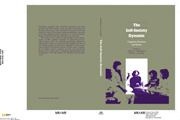Book contents
- Frontmatter
- Contents
- Contributors
- Preface and acknowledgments
- Introduction: The self–society dynamic
- 1 Exploring the relevance of social cognition for the relationship of self and society: Linking the cognitive perspective and identity theory
- 2 Toward a sociology of cognition
- 3 The cerebral self: Thinking and planning about identity-relevant activity
- 4 Growing up: The development and acquisition of social knowledge
- 5 The social contexts of self-feeling
- 6 Self-processes and emotional experiences
- 7 An affect control view of cognition and emotion
- 8 The self-concept as a basis for a theory of motivation
- 9 Attitudes, behavior, and the self
- 10 From changing selves toward changing society
- 11 Possible selves and social support: Social cognitive resources for coping and striving
- 12 Is the road to helping paved with good intentions? Or inertia?
- 13 Social structure and the moral self
- 14 The production of selves in personal relationships
- 15 Conclusion
- Indexes
11 - Possible selves and social support: Social cognitive resources for coping and striving
Published online by Cambridge University Press: 23 September 2009
- Frontmatter
- Contents
- Contributors
- Preface and acknowledgments
- Introduction: The self–society dynamic
- 1 Exploring the relevance of social cognition for the relationship of self and society: Linking the cognitive perspective and identity theory
- 2 Toward a sociology of cognition
- 3 The cerebral self: Thinking and planning about identity-relevant activity
- 4 Growing up: The development and acquisition of social knowledge
- 5 The social contexts of self-feeling
- 6 Self-processes and emotional experiences
- 7 An affect control view of cognition and emotion
- 8 The self-concept as a basis for a theory of motivation
- 9 Attitudes, behavior, and the self
- 10 From changing selves toward changing society
- 11 Possible selves and social support: Social cognitive resources for coping and striving
- 12 Is the road to helping paved with good intentions? Or inertia?
- 13 Social structure and the moral self
- 14 The production of selves in personal relationships
- 15 Conclusion
- Indexes
Summary
The general goal of this chapter is to pursue a synthesis of the information processing properties of the self-concept with prevailing models of social support processes and to explore their combined consequences for health outcomes. Although increasingly indicated in the cast of well-being and health outcome predictors, the roles of social support and the self-concept have been pursued relatively independent of one another. The objective here is to explore mechanisms that serve a social cognitive basis for “transactions” (cf. Lazarus & Folkman, 1984) between the two as well as the relevance of these transactional dynamics for coping and striving efforts and for personal health outcomes. An underlying premise is that the prevailing emphasis on cognitive features of the self-concept predisposes preventive and remedial interventions toward intrapsychic solutions, and that a better understanding of the social interface may argue for a more contextual approach.
Specifically, I will focus on elements within the self-concept and social support systems that bear significantly upon motivation and subsequent motivated or goal-directed activity. In particular, I will emphasize cognitive representations of possible selves, social support appraisals, and their interrelatedness. First, a formulation of the self-concept as both a social product and a social force will be described in terms of the working self-concept and possible selves. The relation of social support processes, particularly support appraisals, to coping processes and to health (including mental health) outcomes will then be sketched.
- Type
- Chapter
- Information
- The Self-Society DynamicCognition, Emotion and Action, pp. 239 - 258Publisher: Cambridge University PressPrint publication year: 1991
- 20
- Cited by

